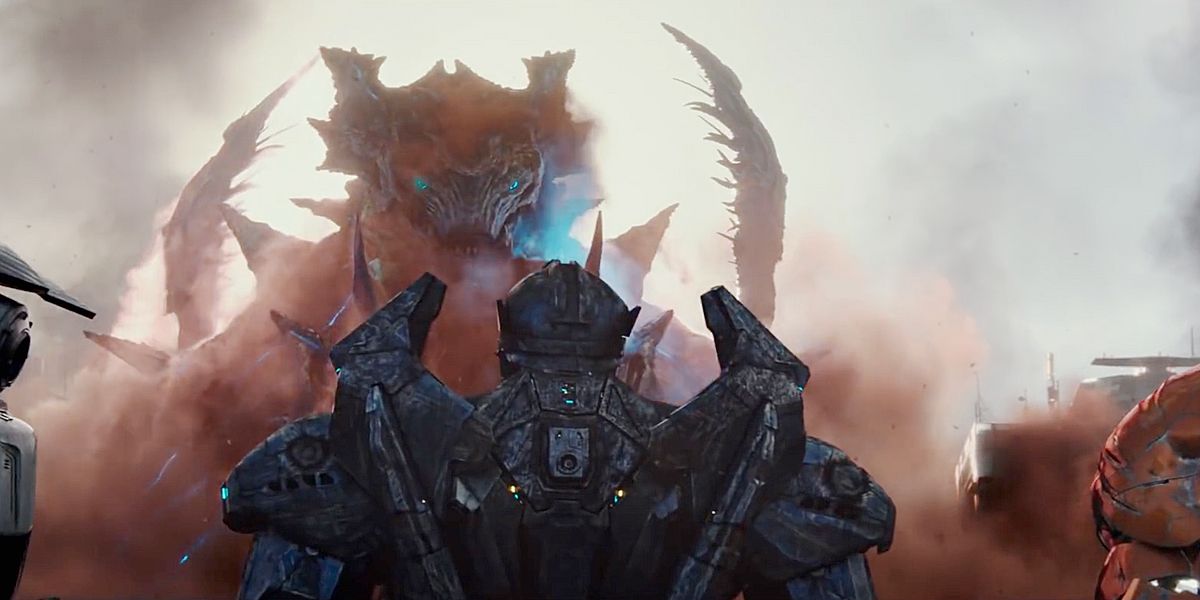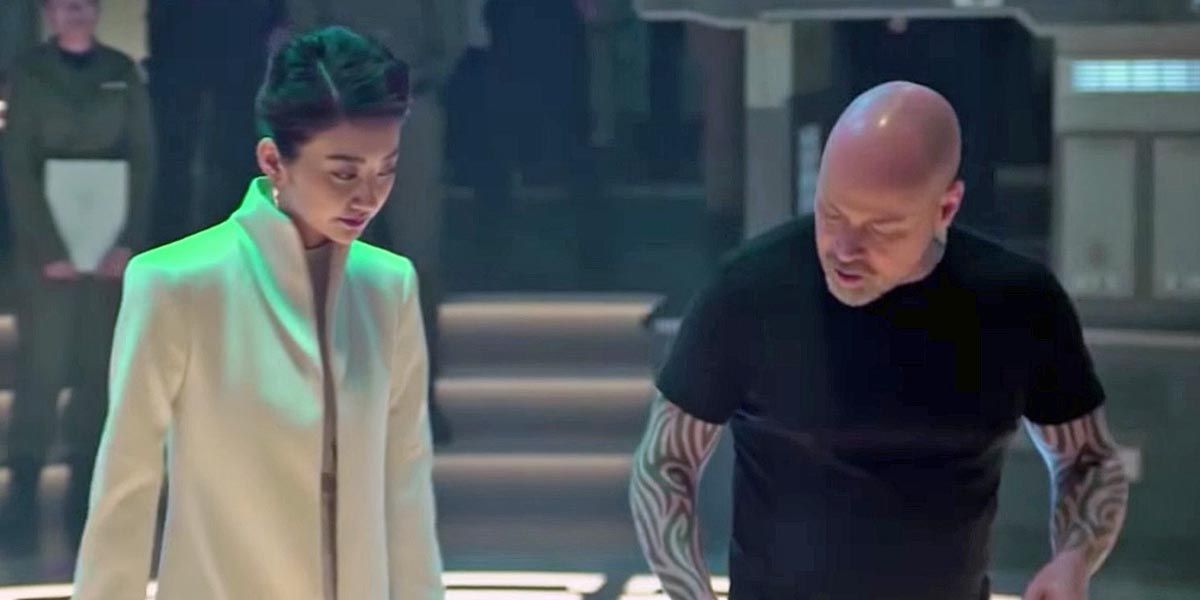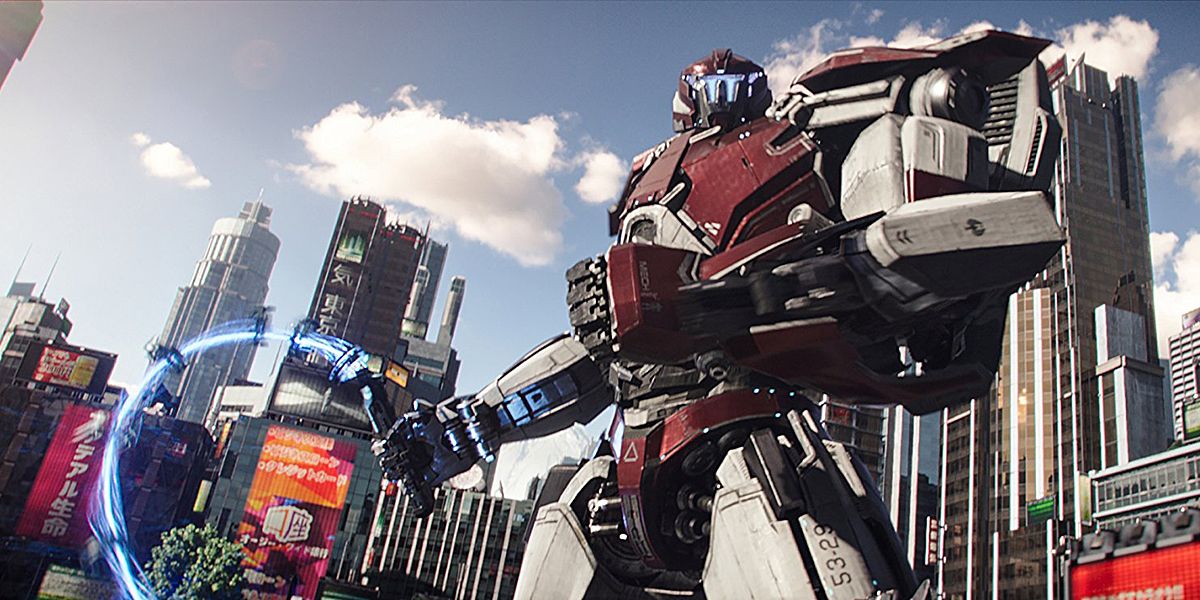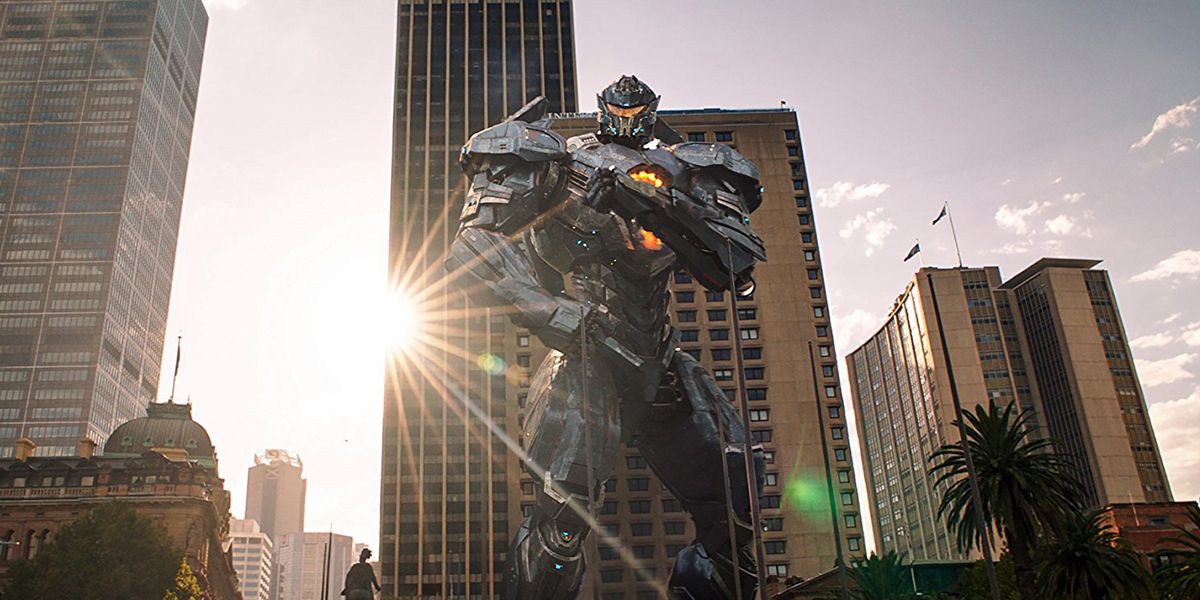In 2013’s Pacific Rim, the monstrous Kaijus emerged from an interdimensional breach to devastate Earth. However, mankind built enormous piloted robots, called Jaegers, to repel the alien invaders. For a decade, there was no new sign of this threat, but that's about to change. Opening today nationwide, Pacific Rim Uprising brings back the Kaiju to finish what they started. In response, rogue Jaeger pilot Jake Pentecost (John Boyega) is recruited to lead a new generation of cadets against this otherworldly menace.
Ahead of the premiere of the Legendary Pictures sequel, director and co-writer Steven S. DeKnight (Daredevil, Spartacus) spoke with CBR about his feature debut, updating the Jaegers and Kaiju, crafting a killer battle sequence, and the possibility of another chapter of the franchise.
CBR: There are plenty of directions Pacific Rim Uprising could have gone. How did you go about putting your own stamp on the franchise?
Steven S. DeKnight: I’ve been such a huge fan of Guillermo del Toro’s work over the years. I really loved the first movie. But one of the biggest things I knew right away is that it would be a horrible, horrible mistake to try to imitate what he did. It’s like trying to imitate Spielberg. It’s not going to happen.
RELATED: Does Pacific Rim Uprising Have a Post-Credits Scene?
Thankfully, Guillermo was very supportive. I gave him my take on the story. He gave me some great suggestions and he said, “Go off and make it your own. Don’t try and make my movie. Make your movie.” I’m a kid of the late ‘70s, early ‘80s, with Star Wars and Raiders of the Lost Ark and Goonies and E.T. What I really wanted to do this time around was a bit of a throwback. I wanted a movie that had a clear three-arc structure, that was two hours or under, that was fast and fun with some emotional beats that didn’t drag the movie down. I also grew up loving Ultraman and Space Giants and all the giant-monster movies. I really wanted to take all those elements and see what I could do with them, knowing full well I didn’t want to repeat the first movie. Even if we were successful in repeating the first movie, people would have been disappointed and would have thought it was a retread. I would rather swing for the fences and strike out than bunt in that kind of way.
Page 2: [valnet-url-page page=2 paginated=0 text='How%20the%20World%20of%20Pacific%20Rim%20Has%20Changed']
Give us a sense of the world 10 years after the Kaijus’ previous rampage. Is Earth still picking up the pieces?
There are some coastal cities that never recovered; most of the world has recovered and moved on. There hasn’t been a Kaiju attack in 10 years. The Pan Pacific Defense Corps has used this break in the war to rebuild the Jaeger program from the ground up since all the Jaegers were destroyed at the end of the first movie. That’s where the world is. The planet has come together; they are a united force.
RELATED: Your Guide to the New Jaegers of Pacific Rim Uprising
One of the things I wanted to do was continue the narrative forward from what Guillermo del Toro and Travis Beacham set up in the first movie, where it was an international fighting force. But, in the first movie, you had Chinese pilots operating Chinese Jaegers and Australian pilots operating Australian Jaegers. I wanted to strip all of that away and take the next step in the evolution of the franchise, which is now world Jaegers. The pilots are now intermingled.
How important was it to introduce audiences to some fresh, young blood?
It was very important. Legendary, when they approached me to doing the sequel, they were very keen on broadening the audience. The first one, which again I loved, did well, but a franchise this size needs to do even better. So, part of broadening the audience was the idea that they wanted to bring in along with the older audience, a younger audience and make it appeal to both. There was no real idea on how to approach that. After thinking about it for a while, I thought the most natural way would be to introduce the next generation of Jaeger pilots, the cadets. It made sense to me that the PPDC would start training pilots early, when they are in their early teens, since when you are younger you make stronger emotional connections and friendships, and you haven’t put up all the walls you put up when we get older. It seems to fit the world and, also, made sense that these pilots in training would be called up to go to war. That was the angle I was looking at. You also get the sense there is a passing of the torch in the storyline, where this new generation of pilots is taking over.
What can you tell me about your main character, Jake, and how he fits into the bigger picture?
Jake, played by the amazing John Boyega – we started talking about the son of Stacker Pentecost [portrayed by Idris Elba in the first film]. We were very fortunate to get John, who does a magnificent job of portraying Stacker’s wild child, Jake Pentecost. He went a bit outside the law, has a bit of that Han Solo feel. He’s somebody who was in the Jaeger program many years ago, left under bitter circumstances and is forced to rejoin. He doesn’t really want to be there. He’s the classic reluctant hero. He’s a guy who has never lived up to his potential, who really gets a second chance to step up and make his father proud.
How have the Kaiju evolved since their last appearance?
Much like Jaegers, since its 10 years later, I wanted to advance their design. On the human side, with the Jaegers, they’ve had 10 years to rebuild them from the ground up. On the Kaiju side, since they are biological weapons created by the Precursors on the other side of the breach, it’s a similar idea. They’ve had 10 years to think about what they did wrong the first time around and upgrade their Kaiju. I wanted to take the fantastic design work that Guillermo spearheaded in the first movie and keep pushing that design further. The Kaiju are much more detailed, because the Precursors have had time to work on them. And, there’s the idea that each Kaiju has a special ability.
Page 3: [valnet-url-page page=3 paginated=0 text='Pushing%20the%20Envelope%20With%20Fight%20Scene']
When it comes to the epic battles, in what ways did you push the envelope or scale back?
You always push it as far as you can until people start screaming you are out of money. You do as much as you can with the resources you have. You always push it right up to the edge. You squeeze every last dime out of the budget you can to put it up on the screen. We were very fortunate to have Peter Chiang, my visual-effects supervisor, and the company Double Negative spearhead the lion’s share of the effects. It’s always a nail-biter. You never have enough time.
REVIEW: Pacific Rim Uprising Is a Robot-Rocking, Monster-Punching Chore
As you can tell from the trailers, another thing I didn’t want to do was repeat Guillermo’s phenomenal visuals of shooting these fights in the rain at night. So, we did most of our action sequences during the day, which is technically a hell of a lot more difficult on the visual-effects department, when you can’t hide anything and it’s all broad daylight. Again, I didn’t want to try and imitate Guillermo and I wanted to offer the audience something a little visually different than the first one.
Obviously, you’ve done a lot of world building on this movie. Where do you see the next installment going?
When we were developing Uprising, I was constantly jotting down notes of possible scenarios for the next movie, just to make sure we were laying in the building blocks. There’s an obvious nod at the end of the movie to a possible sequel. I just wanted to make sure we didn’t paint ourselves into a corner, that we had some idea where we were going. It’s a pretty cool idea. If the audience shows up for this one and we get a third bite at the apple, it’s cool. My plan was always to try and expand the universe by the end of the third movie, so the franchise could support going off in many different directions.
This is your movie directorial debut, but you’ve worked on such TV series as Smallville and Daredevil. Which superhero franchise would you like to get your hands on in the future?
I grew up reading comics constantly, mostly Marvel and DC. It’s like asking what kind of ice cream you want to eat. I love them all. Obviously, there’s the big ones. Superman. Batman. Pick any Marvel character. But, for me, if I was going down the path of a big movie or quasi-big movie, I love what James Gunn did. A lot of people didn’t know Guardians of the Galaxy. I knew it from the comics. I remember when it was first announced, I thought, “Well, that’s insane. I don’t know how they are going to translate Guardians of the Galaxy to the big screen.” James Gunn did such a magnificent job.
So, I looked at Doom Patrol at DC, something like that, which you can sink your teeth into and make it a little quirky. Don’t get me wrong. If somebody popped up and said, “Hey, what about Superman or Spider-Man?,” of course, I’d say yes. I’d be stupid not to. But, I’d love to get my hands on something like a Doom Patrol, something a little bit lesser known. Doing a Doom Patrol movie set in the ‘60s, that would be heaven.
Directed by Steven S. DeKnight, Pacific Rim Uprising is headlined by franchise newcomers John Boyega, Scott Eastwood, Cailee Spaeny, Jing Tian, Adria Arjona and Zhang Jin, with returning stars Rinko Kikuchi, Charlie Day and Burn Gorma. The film is now in theaters nationwide.




